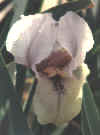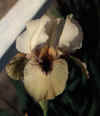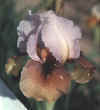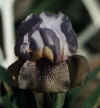ABBB - AABB Crosses
Updated: 15 May, 2002 Returning? Jump to Photos

This page presents "quarterbred" seedlings obtained by the "3/8ths-Route", crossing ABBB-type tetraploids with AABB-type amphidiploids. These have the potential for producing offspring of two genetically different types and this must be taken into account in evaluating their seedlings.
Tell me more about the nomenclature....
A cross between an an ABBB-type tetraploid and AABB-type amphidiploid can produce both AABB-types (functional halfbreds) and ABBB-types (functional quarterbreds). If you are tempted by these types of crosses (and I certainly am!) you should be aware that many of the progeny will be very difficult to classify within the current criteria.
Theoretically, a set of such seedlings should segregate neatly into two groups -- but real life is a bit more complicated. In practice, I have found that:
Many will look like and breed like halfbreds (OB, RB, or OGB).
Many will look like and breed like quarterbreds (OB-, RB-, or OGB-).
Some will look more like halfbreds but breed more like quarterbreds.
Some will look more like quarterbreds but breed more like halfbreds.
Some will be intermediate in both appearance and breeding behavior.
Although the first two groups are relatively easy to classify, the others provide a significant challenge and the present classification system effectively precludes introduction of those with intermediate traits.
Click on the thumbnail to see a larger version of a photo.





